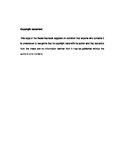In vivo, in vitro micropropagation and chemical characterisation of medicinal compounds in chamomile and yarrow species (Asteraceae)
| dc.contributor.supervisor | Burchett, Stephen | |
| dc.contributor.author | Mahmood, Banaz | |
| dc.contributor.other | School of Marine and Biological Sciences | en_US |
| dc.date.accessioned | 2018-01-24T15:02:13Z | |
| dc.date.available | 2018-01-24T15:02:13Z | |
| dc.date.issued | 2018 | |
| dc.date.issued | 2018 | |
| dc.identifier | 10393171 | en_US |
| dc.identifier.uri | http://hdl.handle.net/10026.1/10662 | |
| dc.description.abstract |
The Asteraceae family is frequently used to describe several medicinal plants which contain various phytochemical compounds including phenols, flavonoids and terpenoids. Among the Asteraceae family German chamomile (Matricaria chamomilla L.) and yarrow (Achillea millefolium L.) plants are extant species used in contemporary medicine. These phytochemical compounds have been traditionally used since ancient times in health care systems worldwide as a source of medicines. The use of micropropagation is essential to improve and increase these active compounds via plant tissue culture within a short period of time using the application of key plant growth regulators (PGRs). Furthermore, quantitative and qualitative analysis using high performance liquid chromatography- ultraviolet detector (HPLC-UV) and gas chromatography- flame ionisation detector (GC-FID) of potential medicinal compounds expressed by both chamomile and yarrow are important points. The protocol of in vitro shoots, roots and callus formation of chamomile and yarrow seeds culture were investigated using Murashige and Skoog (MS) medium supplemented with different concentrations of plant growth regulators (PGRs). MS culture medium containing 0.5 mgL-1 IAA and 1.0 mgL-1 of GA3 were found to be the best culture medium for chamomile and yarrow seeds. In this project in vitro and in vivo growth rates of selected plant species were also investigated. In the earlier growth stages yarrow plants were found to grow much quicker than chamomile, while the yield of chamomile flowers was significantly (p ≤ 0.001) more than yarrow flowers. The phenolic, flavonoid and terpenoid compounds content of leaves and flowers of plants produced from both cultures were also studied. HPLC-UV analysis showed that chlorogenic acid, apigenin-7-O-glucoside and luteolin dominated as the main phenol and flavonoid compounds recovered in both in vitro and in vivo chamomile and yarrow cultures. However, GC-FID analysis indicated that farnesene and nerolidol were detected as the main terpenoid compounds present in the two culture conditions used to grow chamomile and yarrow plants. Moreover, this research examines how chamomile and yarrow plants can produce and improve their phytochemical compounds content not only under well-watered conditions but also under drought stress conditions. The main phenol and flavonoid compounds of chlorogenic acid, caffeic acid, apig-7-glucoside, umbelliferon and luteolin were found in chamomile and yarrow varieties grown under both well-watered and drought stress conditions using (HPLC-UV), however farnesene, nerolidol, chamazulene, α-(-)- bisabol and bisabolol oxide A were observed in the plant essential oils (EOs) using Soxhlet extraction and GC-FID analysis. The antibacterial activity of plant EOs was also investigated using disc diffusion and 96 well plates. In vivo chamomile EO showed the highest antibacterial activity against gram-positive and gram-negative bacteria strains. In addition, in vitro yarrow EO showed the greatest effect on the death of bacteria strains. | en_US |
| dc.description.sponsorship | Ministry of Higher Education/ Kurdistan Regional Government | en_US |
| dc.language.iso | en | |
| dc.publisher | University of Plymouth | |
| dc.rights | CC0 1.0 Universal | * |
| dc.rights.uri | http://creativecommons.org/publicdomain/zero/1.0/ | * |
| dc.subject | Yarrow | |
| dc.subject | Micropropagation | |
| dc.subject | Phenols | |
| dc.subject | Flavonoids | |
| dc.subject | Abiotic Stress | |
| dc.subject | Chamomile | en_US |
| dc.subject.classification | PhD | en_US |
| dc.title | In vivo, in vitro micropropagation and chemical characterisation of medicinal compounds in chamomile and yarrow species (Asteraceae) | en_US |
| dc.type | Thesis | |
| plymouth.version | publishable | en_US |
| dc.identifier.doi | http://dx.doi.org/10.24382/834 | |
| dc.rights.embargoperiod | No embargo | en_US |
| dc.type.qualification | Doctorate | en_US |
| rioxxterms.version | NA |
Files in this item
This item appears in the following Collection(s)
-
01 Research Theses Main Collection
Research Theses Main



